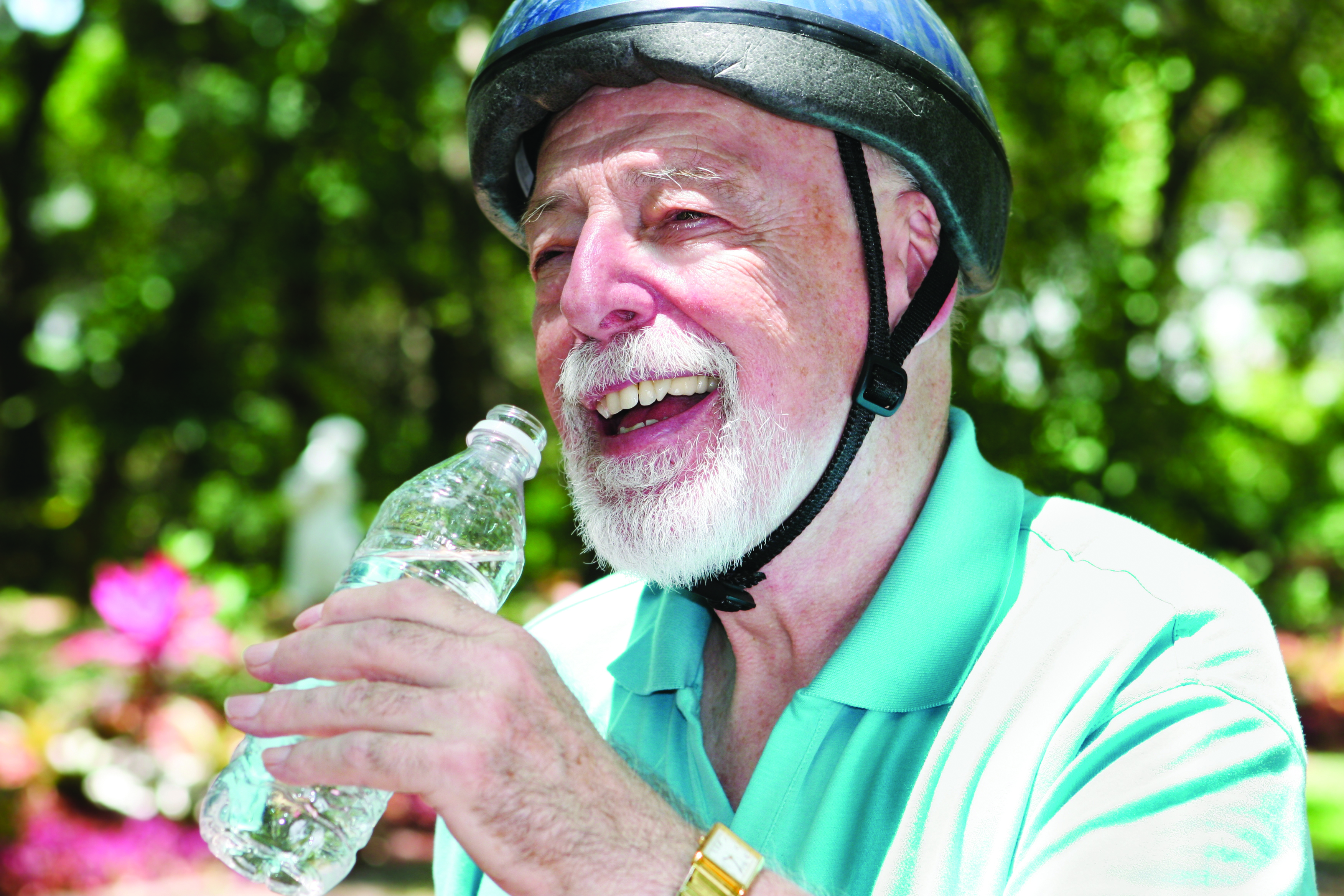
By Susan Fink
NSCA-CPT, ACE-GEL
Every year we celebrate another birthday. And every year we feel like we are getting a little closer to being old. We don’t want to look old (which each person defines differently), and we don’t want to act old like not remembering things and moving more slowly because we don’t have the same strength we had when we were younger. We have the power, however, to help us age with grace, dignity, and our memory. Exercise can help prevent many of the physical and cognitive issues we experience as we get older.
According to the most recent statistics, 70% of individuals aged 65 will need long-term care assistance at some point during their lives. For couples both aged 65, the shocking number is that in 90% of those couples, at least one spouse will need long-term care assistance and in half of those couples, both spouses will need it. Here’s another frightening thought: the average patient with dementia lives nine years with the disease. So how can we help ourselves and our older clients not be one of those statistics? Regular exercise can help a person avoid the sorts of injuries and chronic weakness that lead to the need for long term care assistance, especially since by age 70, people lose 25% of their muscle mass. Loss of muscle mass can be one of the causes of weak bones, which can result in falls leading to broken hips and other bones. And once an older person breaks a hip, they rarely completely recover back to their pre-injury condition. It has also been shown that regular exercise is the best medicine – better than gardening, crossword puzzles, or math games – to prevent loss of brain function.
Two big areas addressed by some exercise programs are balance and fall prevention. How many of us know someone who fell and broke a hip? Or was it that the hip broke and the person fell as a result? In that case, it is likely that the issue of weak bones and muscles could have been helped by a strength training program. Maybe we don’t know why someone falls. And maybe it doesn’t matter. Because no matter the cause, falling is a big problem. According to the Center for Disease Control and Prevention, 95% of hip fractures are caused by falls and the rate of hip fractures for women is almost twice the rate for men. How big is the problem of falls?
- 1 in 3 older adults (aged 65 and older) falls each year. Fewer than half talk to their healthcare providers about it. Among older adults, falls are the leading cause of both fatal and not fatal injuries.
- In 2013, 2.5 million non-fatal falls among older adults were treated in emergency departments and more than 734,000 of these patients were hospitalized. For those going to the hospital, their hospital stays were often twice as long as those of elderly patients who were admitted for other reasons.
- In 2013, the direct medical costs of falls, adjusted for inflation, were $34 billion.
What outcomes are linked to falls? According to the Centers for Disease Control and Prevention:
- 20%-30% of people who fall suffer moderate to severe injuries such as lacerations, hip fractures, and head traumas. These injuries can make it hard to get around or live independently, and increase the risk of early death.
- Many people who fall, if they are not injured, develop a fear of falling. This fear many cause them to limit their activities, which leads to reduced mobility and loss of physical fitness, and in turn increases their actual risk of falling.
- Lack of mobility also leads to depression.
- How can all of us, especially older adults, prevent falls? A simple answer is to exercise regularly. A basis program includes exercises for all the major muscle groups. This increases leg strength. Balance training can also be added to the mix. These with a flexibility component are key elements in preventing falls. In addition to strengthening the body, all medications both prescription and over the counter should be reviewed to identify medicines that may cause side affects or interactions such as drowsiness or dizziness. Other areas to look at to help prevent falls include:
- Have yearly eye exams and update eyeglasses to maximize vision.
- Make their home safer by reducing tripping hazards, adding grab bars inside and outside the tub or shower and next to the toilet, adding railings on both sides of stairways, and improving the lighting in their homes.
It is also important to look at some nutritional components that help to maintain bone health and lower the risk of hip fractures. These include: an adequate intake of calcium and vitamin D from food or supplements, adequate levels of Zinc and Vitamin K, and adequate levels of Magnesium, Boron, Omega 3 and essential Fatty Acids.
It is important to stay hydrated. When may suffer from disorientation which can lead to falls when our bodies don’t have enough hydration.
Brittle bones often lead to falls. It is important to be screened for osteoporosis and treated for those with it. And of course, weight bearing exercise aids in digestion and overall well being.
We know there are no guarantees in life. Because of that, we can have the attitude that it doesn’t matter what we do. Or, we can do everything we can to live upright and strong for our remaining days.
**********
Susan Fink is a certified personal trainer through the National Strength and Conditioning Association and holds a Specialty Certification in Senior Fitness from the American Council on Exercise. Susan conducts private and small group training for women in her studio in the Pico/Robertson area. For information on her training and other questions emailsusan@trainwithsusan.com